Am I Hot Or Not? Putting 3 AI “Golden Ratio” Technologies To The Test
Numbers are objective, so if my facial features are close to the “Golden Ratio,” then I’m closer to physical perfection, right? That's the theory, but I'm not so sure the science is settled on this one.
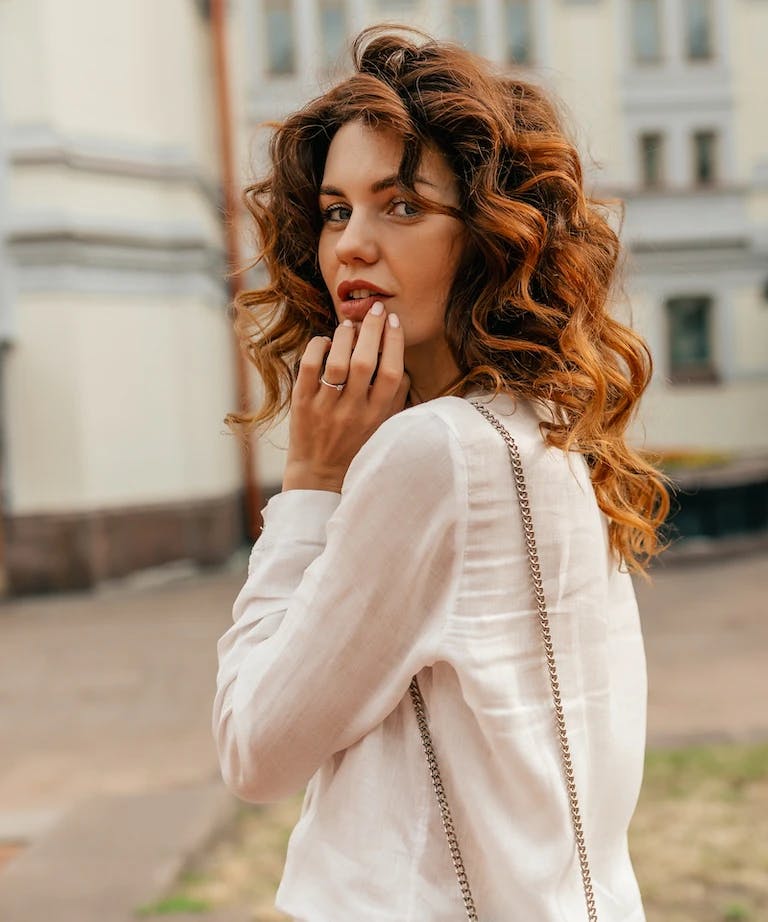
In the days of Greek antiquity, some hypothesized that physical beauty could be calculated by the “Golden Ratio,” otherwise known as nature’s code for facial symmetry. This train of thought, later championed by OG “Renaissance Man” Leonardo Da Vinci – whose expert application of this “Divine Proportion” spawned some of history’s most iconic works of art – has since been used to “scientifically” determine who could be the most attractive woman or man in history.
People can now use the Golden Ratio to analyze beauty without even understanding the numerical origins of the Ratio thanks to computerized mapping technology, such as the kind made famous by plastic surgeon Dr. Julian De Silva. Dr. De Silva’s work has spread like wildfire across the internet, analyzing celebrity faces to “objectively” crown the most symmetrically beautiful celebs. The qualifications? According to Dr. De Silva, “The length of the ear must be equal to the length of the nose, and the width of an eye should be equal to the distance between the eyes.”
But what about us common folk who may not have enough notoriety to be analyzed using Dr. De Silva’s technology? Are we SOL, doomed to never know if our beauty reaches that of scientifically-sound proportions? One other benefit of modern technology is that if the market demands, the market shall receive: There has since been an increase in accessibility for cheaper (or, in many cases, free) software that promises similar results to Dr. De Silva’s technology. I put three of these technologies to the test to see if there is a scientific answer to the age-old question: Am I hot or not?
The Three Face Analysis Apps I Used, So That You Don’t Have To
AI is all the rage right now for any number of things, from students plagiarizing their papers to musicians like Grimes opening up her literal voice to be manipulated by the general public, but machine-learning programs and other artificial intelligence technologies have been publicly available for quite some time now. Hop into the App Store and search “Golden Ratio” or “Face Analysis,” and you’ll find pocket-sized AI-powered programs that promise to analyze how symmetrical – and therefore “beautiful” – your facial features are.
For the sake of this experiment, I downloaded two of the least sketchy looking apps (though admittedly, they were all a little too sus for my own personal comfort) to choose from: FaceTag App and Golden Ratio Face. At the same time, I came across an absolute fever-dream of a website called Hot Chat 3000, which I immediately knew needed to be put to the test. The “1-to-1 online chat website where who you can talk to is contingent on how attractive you are, and how attractive you are is determined by AI” was recently launched by an art collective of Big Red Boot and MSCHF (of Lil Nas X “Satan Shoe” fame).
Hot Chat 3000 rates people’s faces on a scale of 1-to-10 à la “Hot or Not”-style diagnoses using its OpenAI machine-learning model. As for FaceTag App and Golden Ratio Face, these two apps promise to automatically measure proportions of each part of your face to determine your beauty based on nature’s code.
To really put the power of these programs to the test, I ran three different selfies through each. First is my unposed, subpar photo taken in the moment, second is a posed selfie which I’m fond of, and third is my preferred “headshot,” which definitely isn’t just an iPhone photo that my friend snapped.
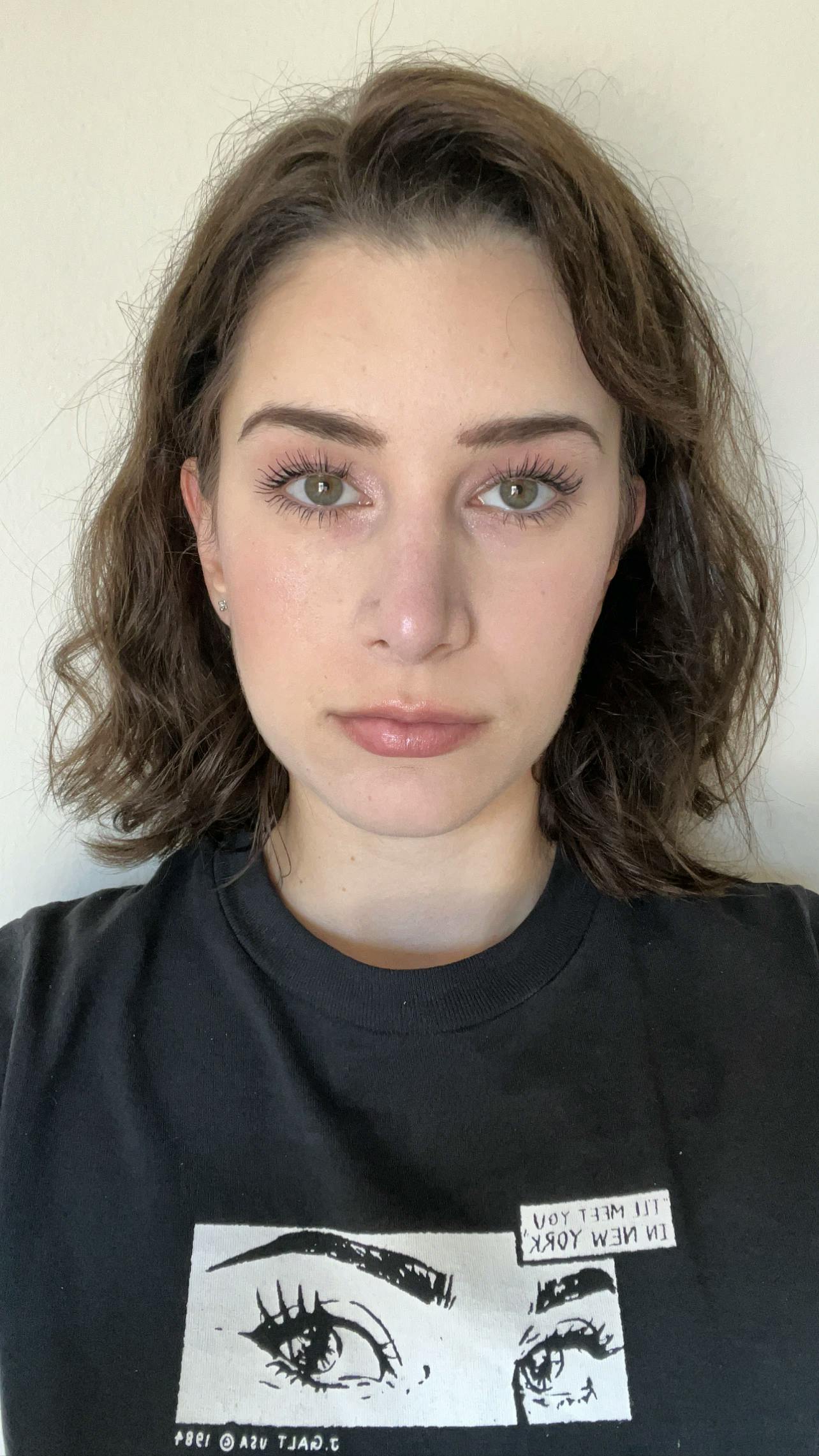
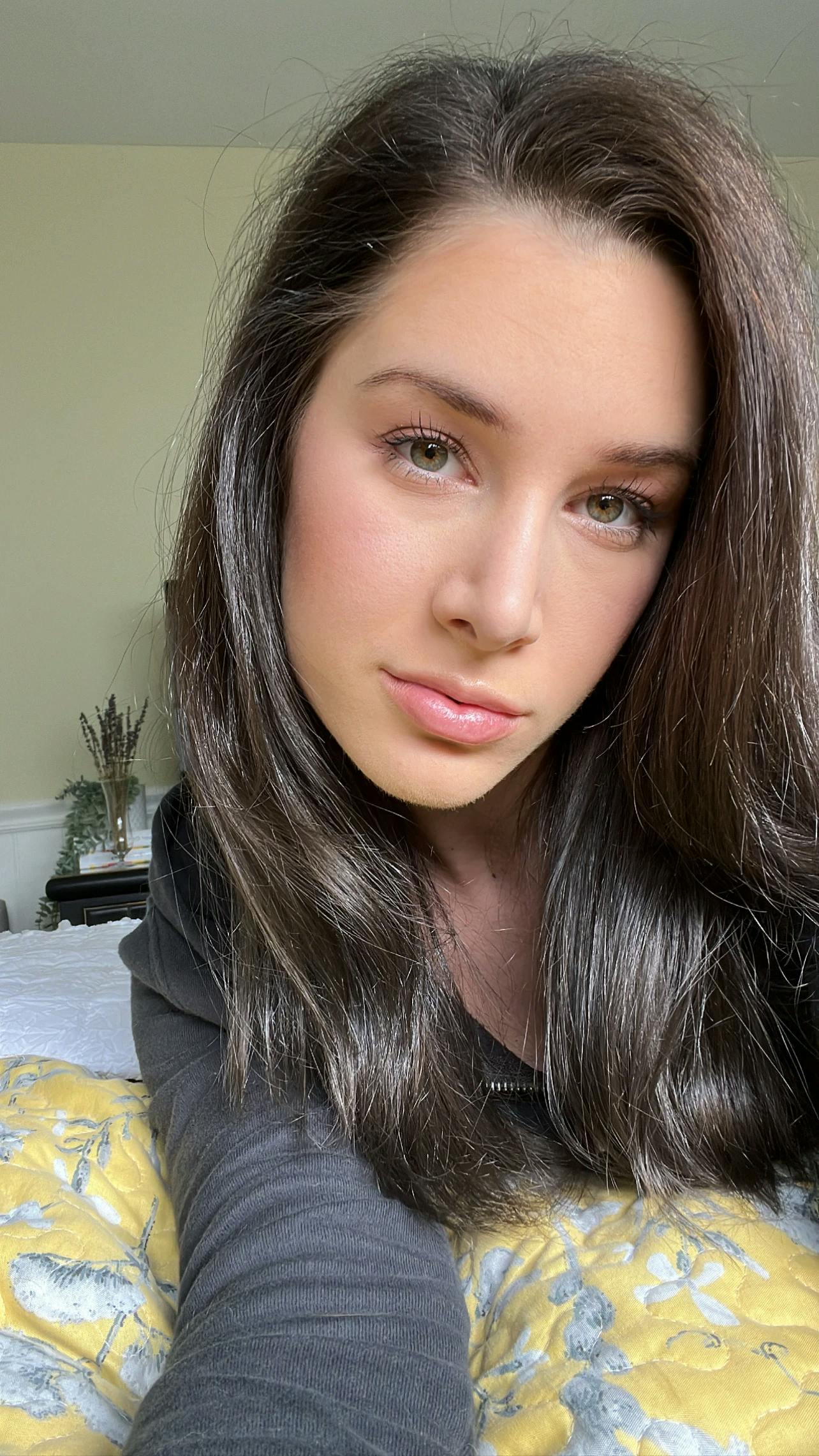
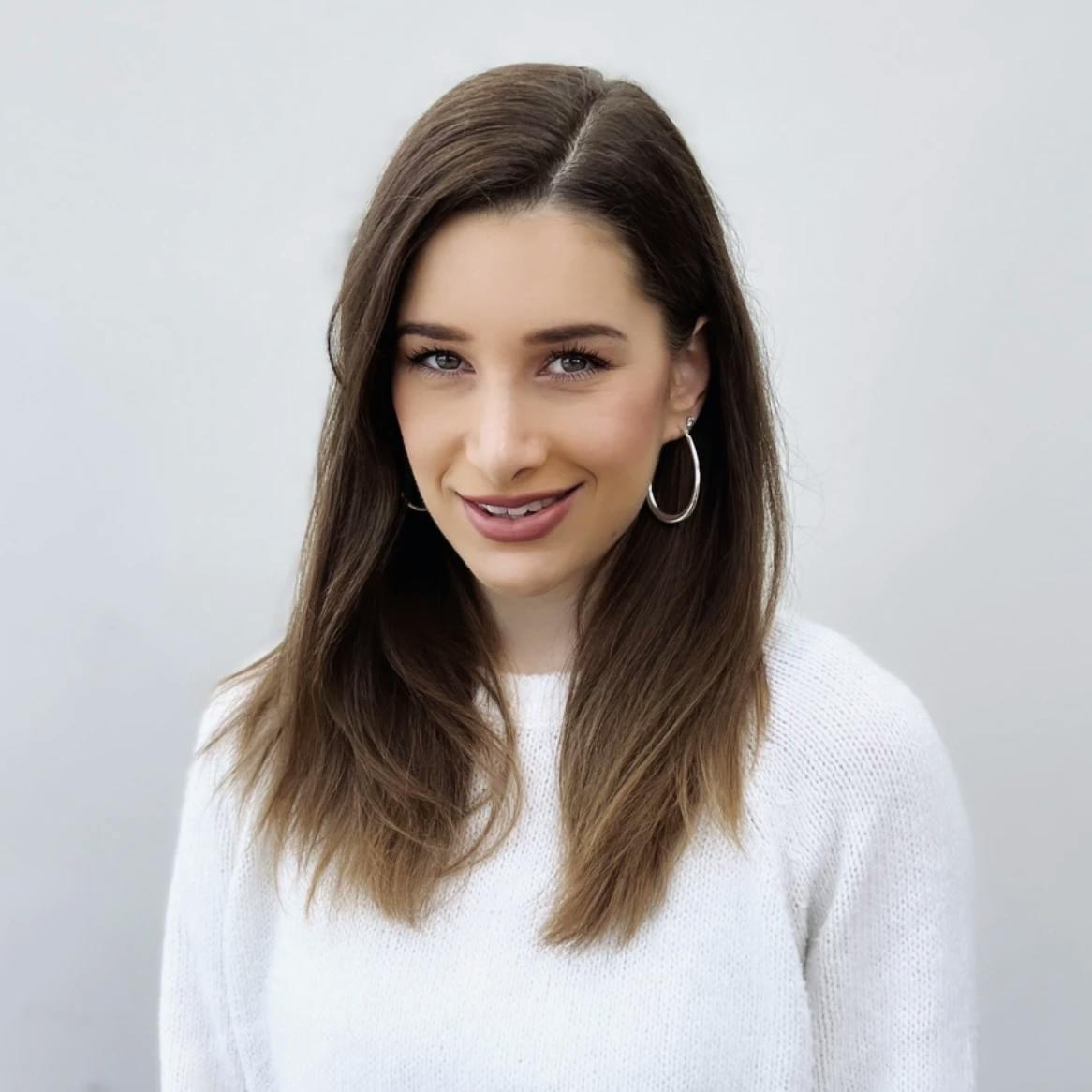
Was I nervous about letting random software developers track and likely sell my data just to run these experiments? Mildly, but if Grimes feels comfortable with internet anons making music using her voice I suppose I can look past any discomfort surrounding my selfies (which are already available on many social media platforms) being uploaded to yet another app.
Am I Hot or Not, according to MSCHF’s Hot Chat 3000?
Subpar selfie: When I ran this one through Hot Chat, my hotness level was diagnosed as a 6.1, which definitely wasn’t a sucker-punch straight to my gut or anything!
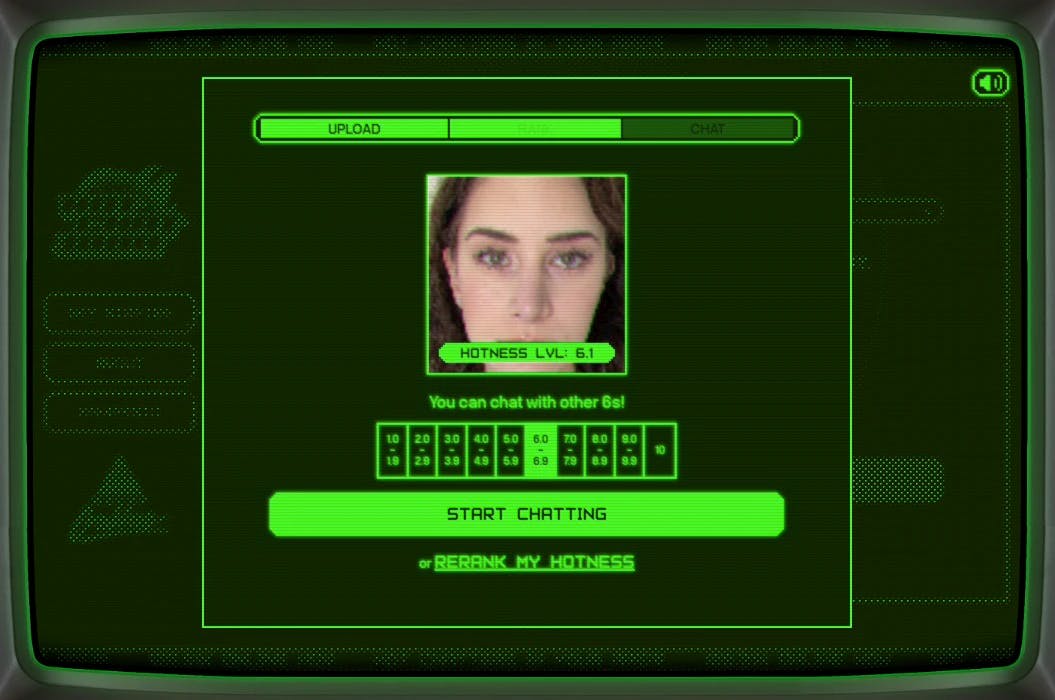
Superior selfie: According to Hot Chat, my hotness level had reached 8.5, so if I wanted to I could chat with other 8s. There were no other 8s online at the time, so I sat up on my high horse all alone.
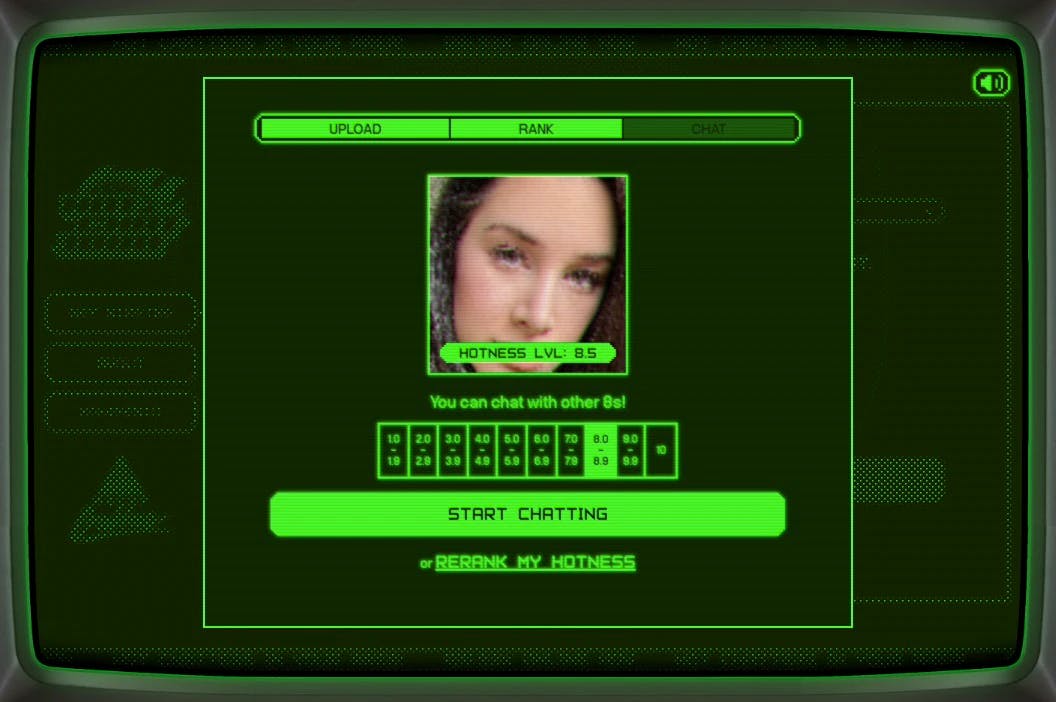
Preferred headshot: Riddle me this: All of a sudden, my hotness dropped to 7.4, meaning that I was demoted to chatting with other 7s. I cut my slice of humble pie and ate it too.
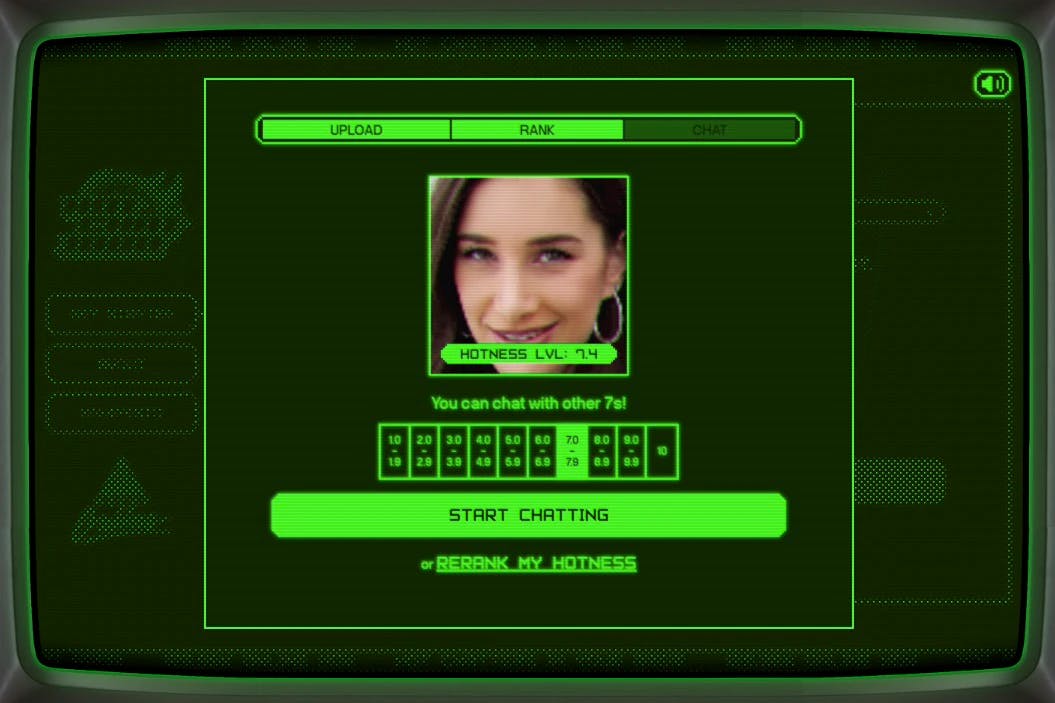
What’s my verdict on Hot Chat 3000? While it’s undeniably stylish and almost worth using simply to enjoy those naughtie-aughtie vibes, the wide range in results made me question its analytical abilities. Then, when I did further digging, I learned that bombshell beauty Sydney Sweeney had been graded a 5.2 when the New York Post recently tooled around with the software. Something tells me that this bot needs a little bit more machine-learning before it can dole out honest scores.
Am I Hot or Not, according to the FaceTag App?
Subpar selfie: According to FaceTag, I have a fresh, oblong shape face which earned me an 88 out of what I can only assume is 100. When breaking down my features, it most notably thought the width of my eyes was quite big and that the overall aspect ratio of my face was “tall.” But, at least I know I’m fresh, for what that’s worth!
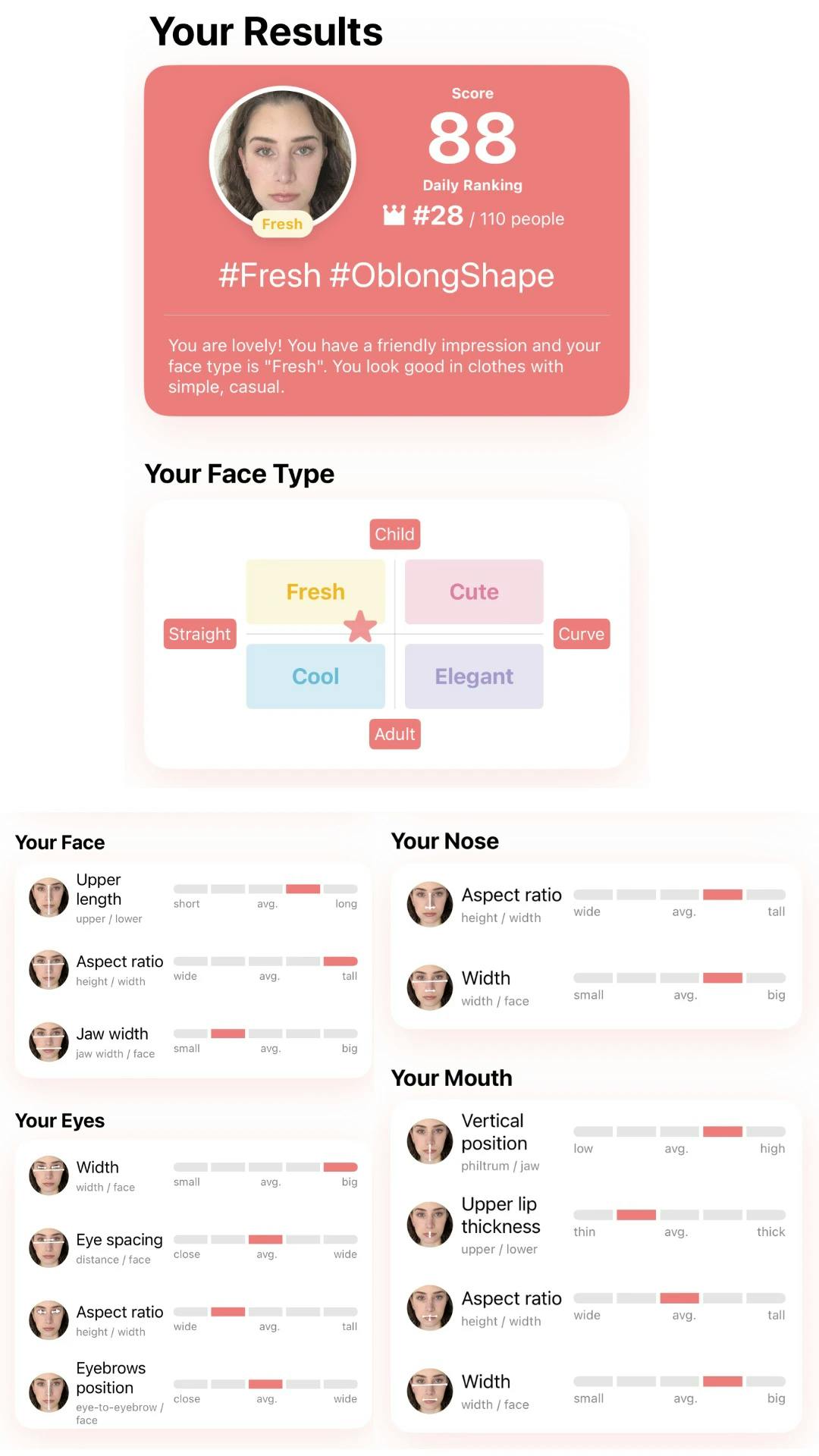
Superior selfie: FaceTag liked my posed selfie more, deeming me an 89 with a cool, oblong shape face. This time around, the app didn’t think the aspect ratio of my face was too polarizing, but my eye width was once again quite big. Simply put, this photo didn’t rock the boat all that much.
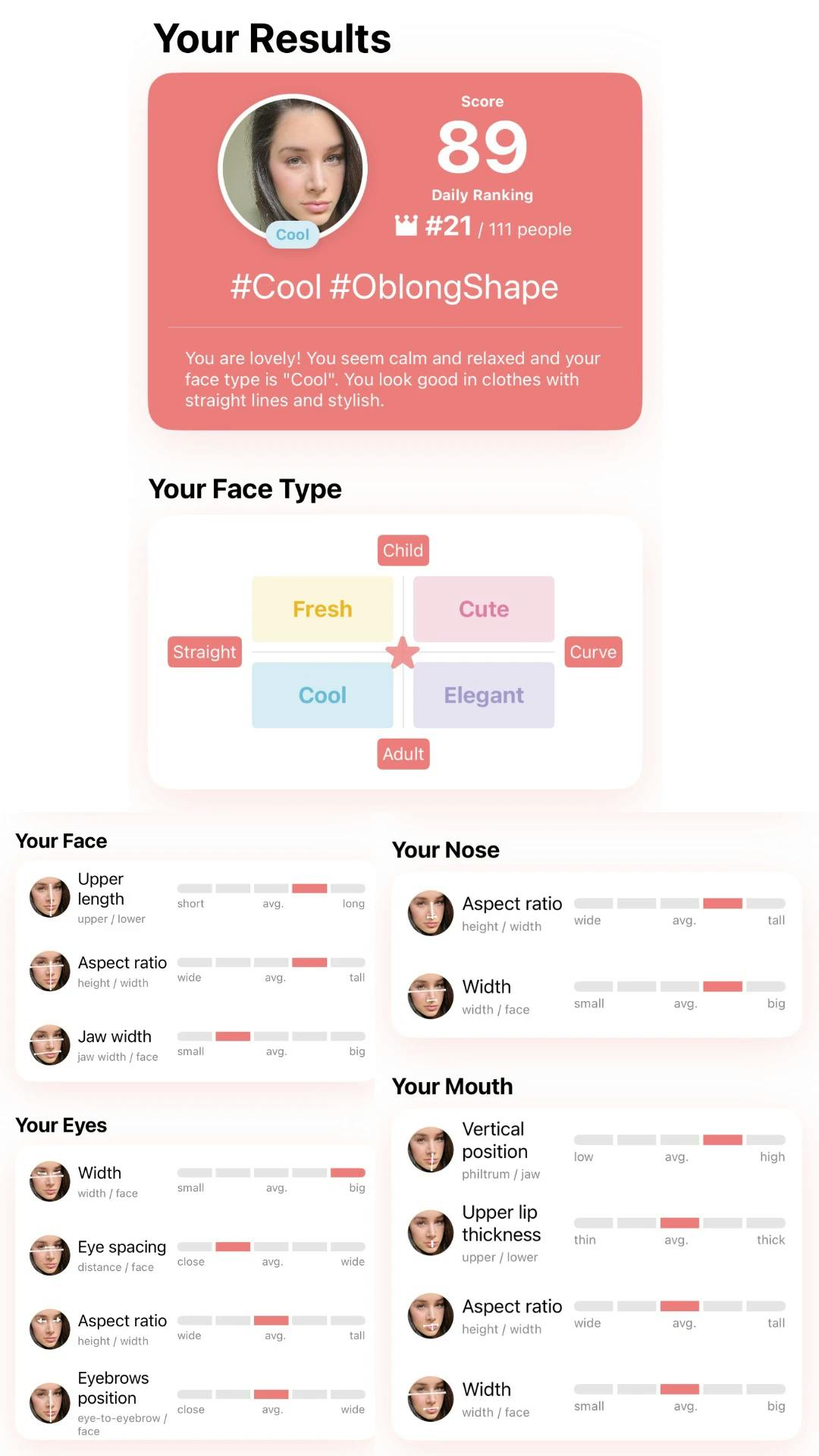
Preferred headshot: Well I guess it’s time to retire this headshot, since FaceTag graded it as my lowest ranking photo with a 79. I was back to my fresh, oblong face, but there were noticeable differences in the ranking of my features. Apparently, my eye spacing was very close, the aspect ratio of my eyes was very wide, and my eye-to-eyebrow position was very close. FaceTag additionally thought the width of my nose and the overall width of my face was very big.
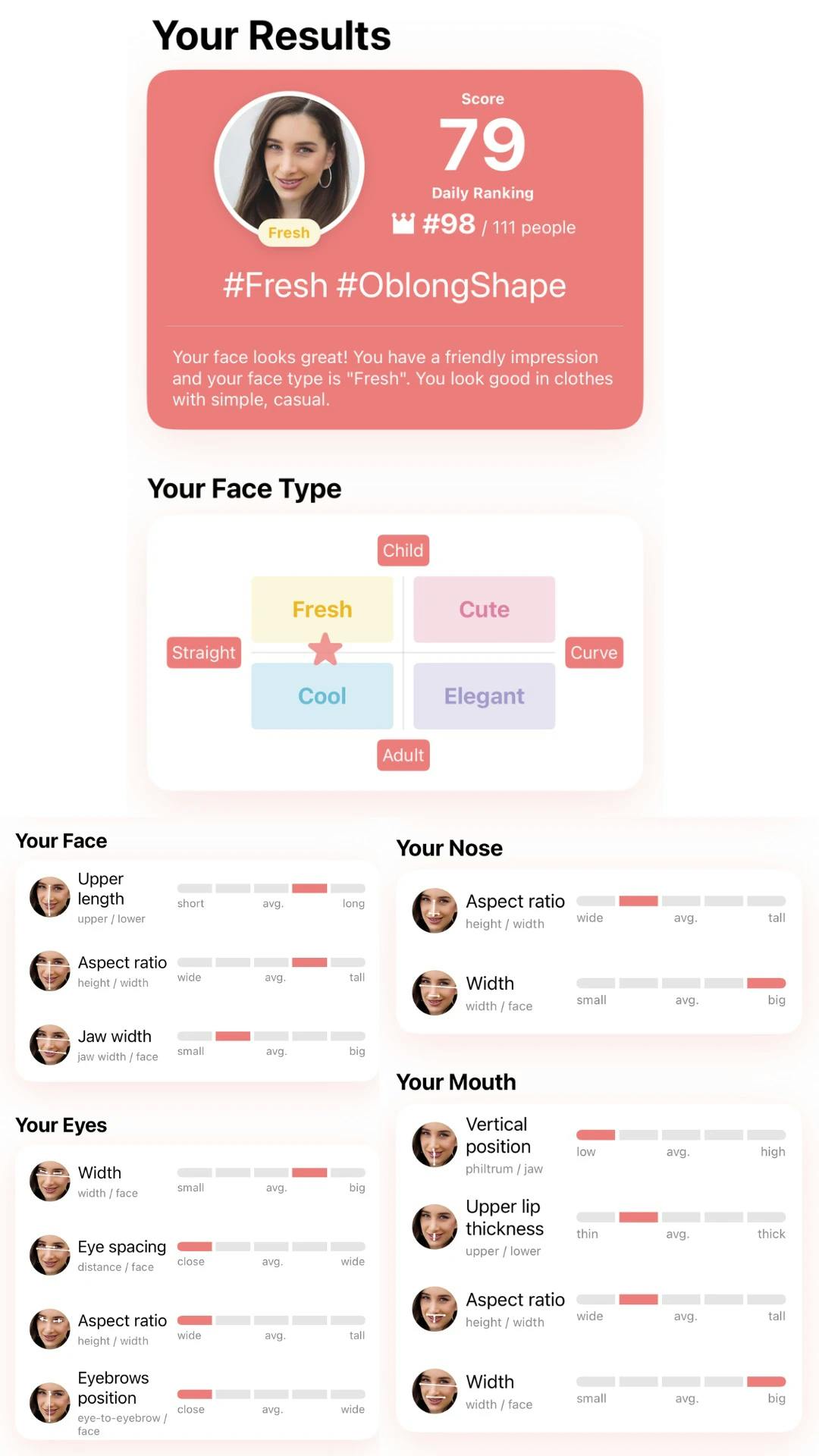
What’s my verdict on the FaceTag App? Once again, this software had far too many different rankings for what I thought were fairly consistent facial features. To be fair, my face is angled differently in each photo, but its low-energy breakdown with no visible calculations for each facial measurement didn’t appear very credible. It’s also worth noting that you have to pay if you want to learn more about your results, which I’d strongly recommend against.
Am I Hot or Not, according to the Golden Ratio Face App?
Subpar selfie: Though I thought this was the worst photo of the three I ran, this app gave me a 9.89 ranking. Frankly, I do feel like I looked a bit better here since most of my facial features were obstructed by lines anyway.
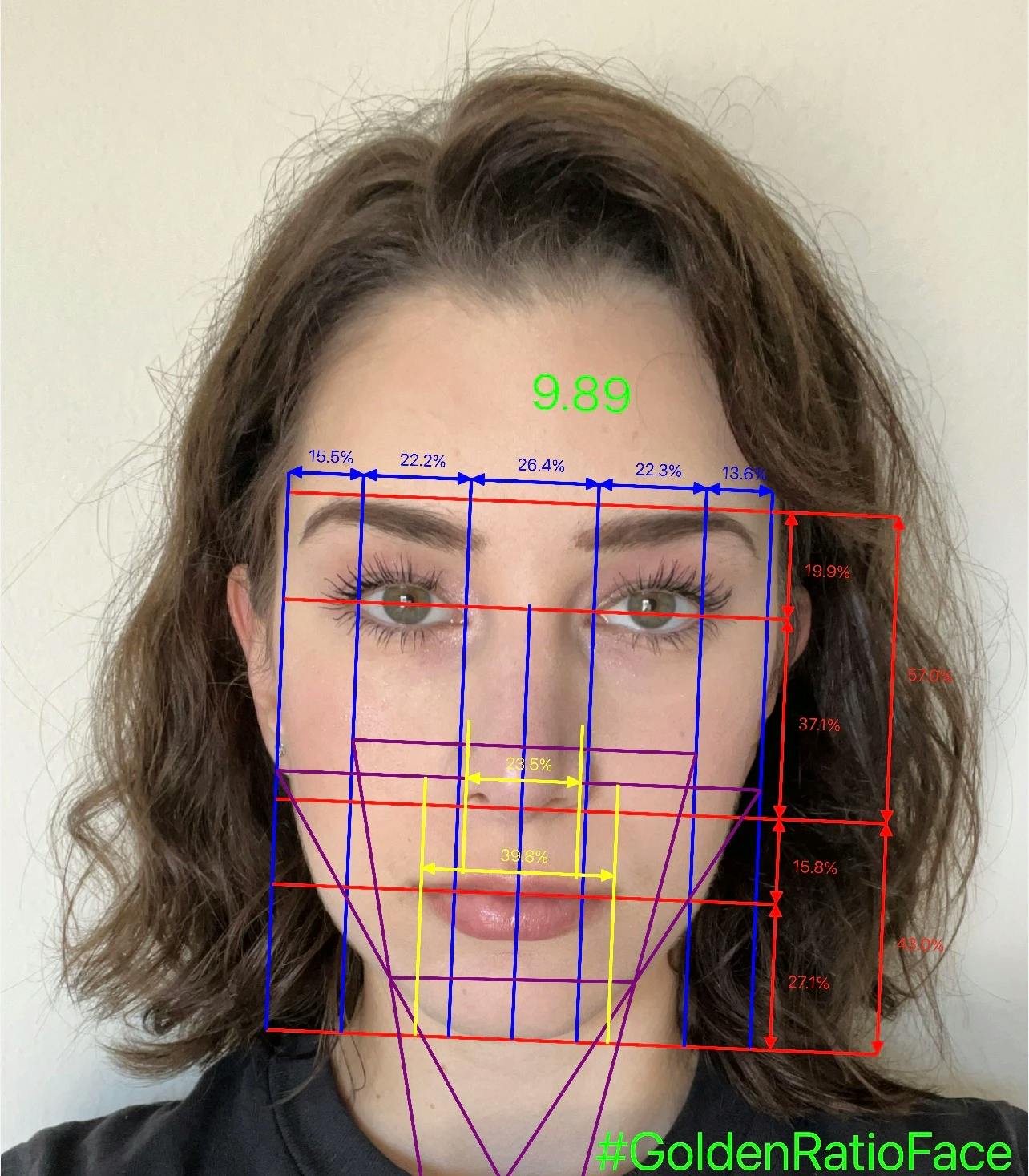
Superior selfie: The Golden Ratio Face app knocked me down a few marks this time and gave me an 8.64 ranking. Call it coping, but I’ll just pretend like I scored lower because my face was slightly turned to the left and therefore not actually able to receive accurate mathematical results.
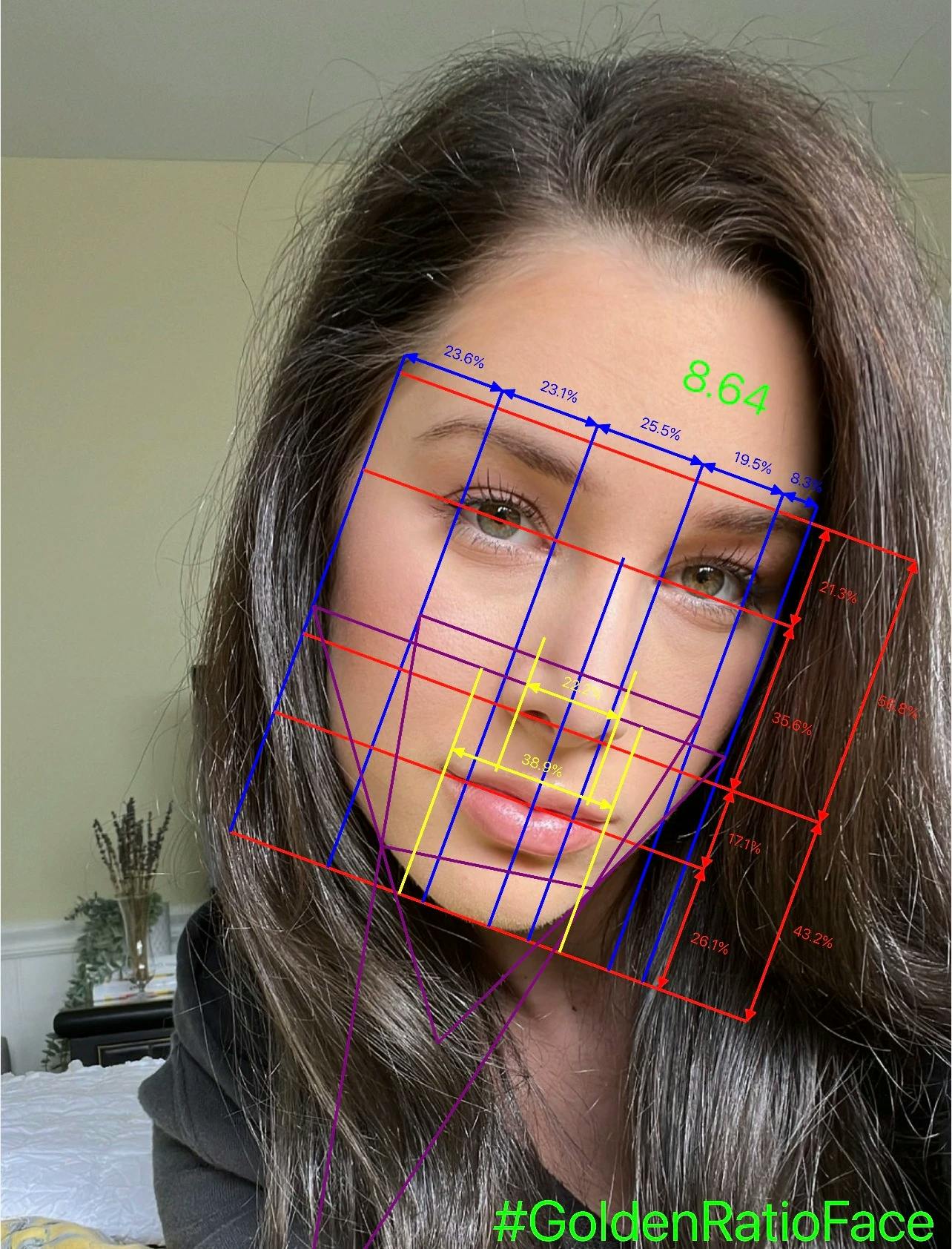
Preferred headshot: Bust out the humble pie once more, because Golden Ratio Face ranked my headshot as 7.11! Maybe I should keep up my delusion that this lower rating was due to my face being turned slightly to the right in this picture.
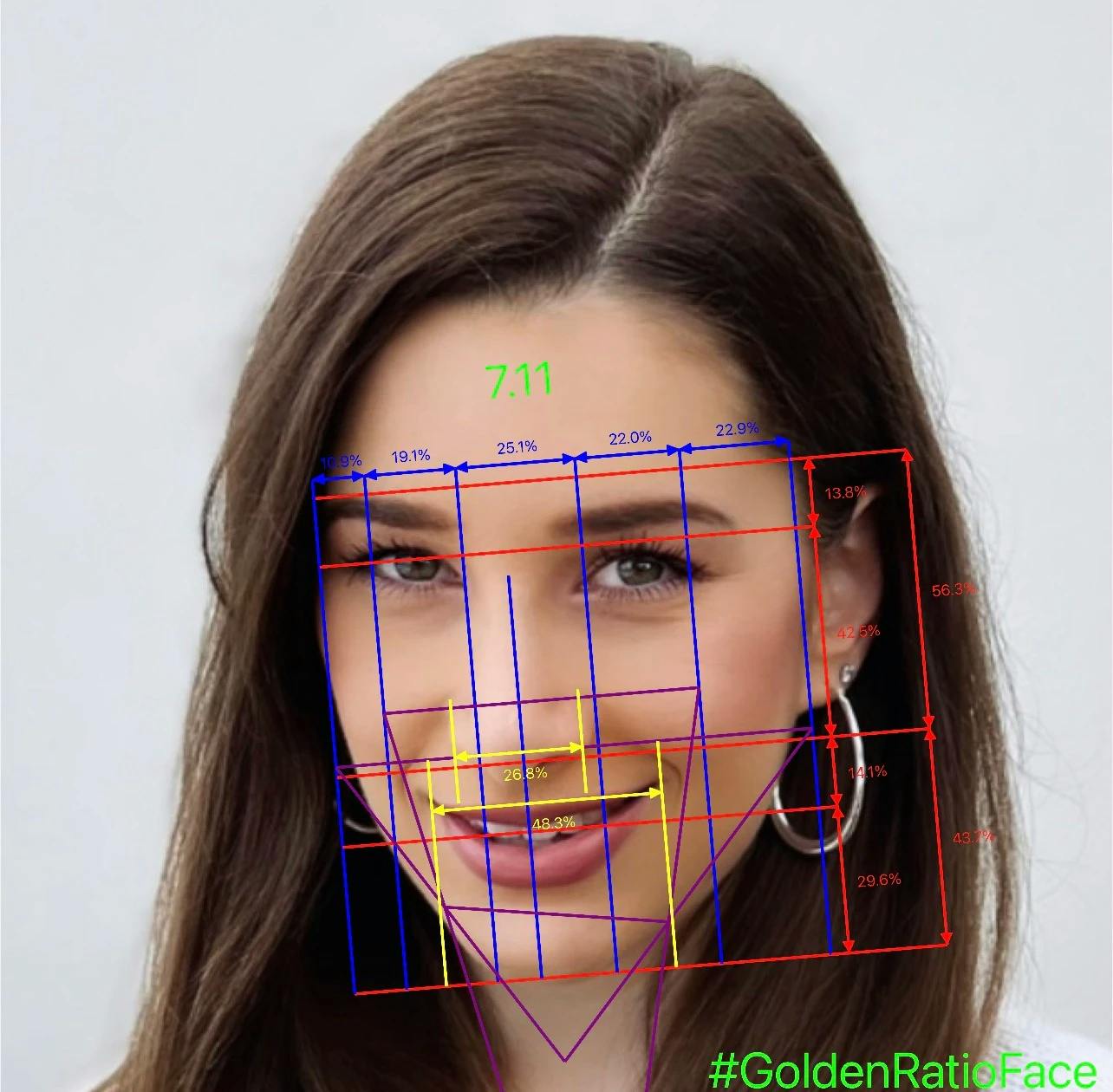
What’s my verdict on the Golden Ratio Face App? I’d like to love this one more, but frankly other than the funny lines superimposed over my face with tiny little numbers to accompany each measurement, it didn’t tell me much about how symmetrical my face is. This app claims to be solely focused on “the geometry of your face,” analyzing how close each feature is to that “divine” ratio of 1.618. Knowing that Dr. De Silva’s analysis recently found actress Jodie Comer’s face to be 94.52% accurate to the Golden Ratio (ranking her higher than actress Zendaya at 94.37% and supermodel Bella Hadid at 94.35%), I felt even more skeptical of my “subpar selfie” getting a 9.89 ranking by Golden Ratio Face. So, it’s a no from me.
Is Beauty in the Eye of the Beholder or the Bot?
There are many more apps I could have downloaded to put my hotness to the test, but honestly none of the existing free (or freemium) software bears enough credibility to be worth my time or yours.
One of the biggest problems you’ll face with trying to get consistent, “factual” results is the variation in each photo's focal length. Have you ever noticed that your face shape looks somewhat different in the mirror compared to how it looks when taken with your front-facing smartphone camera, your rear-facing smartphone camera, or any photos taken with an actual digital camera? What about when those digital cameras have an added lens?
Your features look different because lens choice can significantly impact the focal length at which your photo is taken. A professional photographer once put this to the test, demonstrating that photos shot with a 16mm lens made his face look long and thin, but when he gradually increased lens size to 200mm his face looked rounder and larger. If “Golden Ratio” technologies are measuring the distance between certain regions of your face to another defined region, wouldn’t there be noticeable discrepancies in rating based on the focal length at which your selfie or professional headshot was taken? For this reason alone, I can’t trust these apps.
Furthermore, none of these commercially available, free (or freemium) apps give enough detail about how they work. They are fun toys to play around with if you and your friend want a good laugh, but if you’re not uploading your own photos to Photoshop or Lightroom to manually apply basic golden ratio grids meant for artistic composition, you’re probably not getting “scientifically accurate” results.
It’s also just not productive to base your beauty, and consequently your own self-worth, on the Golden Ratio. The alleged mask of a “perfect face,” created by cosmetic surgeon Stephen R. Marquardt, eponymously known as Marquardt’s mask, is used in the field of plastic surgery and orthodontics to achieve the “ideal, final aesthetic result.” But some critics say they have debunked this test because it doesn’t represent any ethnic groups beyond Northwestern European women. What’s more, many of the most stunning celebrities actually have noticeable facial asymmetry from Rosie Huntington-Whitely to Paris Hilton to Ryan Gosling and more.
Closing Thoughts
Sure, symmetry within a work of art can add to its inherent beauty, but we living breathing humans are simply built differently. Our little facial “quirks” can actually increase how endearing we are to onlookers! What we might find to be a flaw about our faces could be the exact reason why someone finds you absolutely attractive.
Your own unique allure comes as a result of many more elements than just how symmetrical, and therefore “scientific” your face may be. These range from superficial things like your skin’s radiance to non-physical factors like your pheromones, your sense of humor, your chosen style, your personality, and overall aura. Your beauty can’t be universally determined by a machine, no matter how well-trained it is in using existing data and prompts, so relish in your asymmetrical flaws and remember that true self-worth is found within.
Love Evie? Sign up for our newsletter and get curated content weekly!